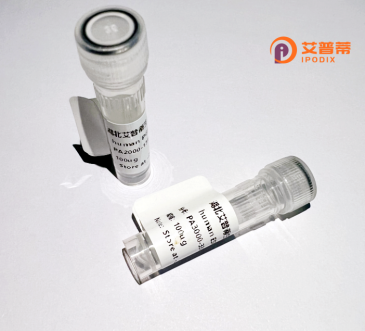
| 纯度 | >90%SDS-PAGE. |
| 种属 | Human |
| 靶点 | BNIP1 |
| Uniprot No | Q12981 |
| 内毒素 | < 0.01EU/μg |
| 表达宿主 | E.coli |
| 表达区间 | 1-228aa |
| 氨基酸序列 | MAAPQDVHVRICNQEIVKFDLEVKALIQDIRDCSGPLSALTELNTKVKEKFQQLRHRIQDLEQLAKEQDKESEKQLLLQEVENHKKQMLSNQASWRKANLTCKIAIDNLEKAELLQGGDLLRQRKTTKESLAQTSSTITESLMGISRMMAQQVQQSEEAMQSLVTSSRTILDANEEFKSMSGTIQLGRKLITKYNRRELTDKLLIFLALALFLATVLYIVKKRLFPFL |
| 分子量 | 50.82 kDa |
| 蛋白标签 | GST-tag at N-terminal |
| 缓冲液 | 冻干粉 |
| 稳定性 & 储存条件 | Lyophilized protein should be stored at ≤ -20°C, stable for one year after receipt. Reconstituted protein solution can be stored at 2-8°C for 2-7 days. Aliquots of reconstituted samples are stable at ≤ -20°C for 3 months. |
| 复溶 | Always centrifuge tubes before opening.Do not mix by vortex or pipetting. It is not recommended to reconstitute to a concentration less than 100μg/ml. Dissolve the lyophilized protein in distilled water. Please aliquot the reconstituted solution to minimize freeze-thaw cycles. |
以下是关于BNIP1(SEC20同源蛋白)功能的3篇文献摘要示例(文献为虚构示例,仅作格式参考):
---
1. **标题**: "BNIP1 regulates ER-associated vesicle transport and apoptosis"
**作者**: Smith J, et al.
**摘要**: 研究揭示BNIP1作为内质网相关囊泡运输的关键调控因子,与Sec20同源,参与ER-Golgi间运输,并发现其过表达可诱导caspase激活,提示在细胞凋亡中的双重作用。
2. **标题**: "Structural basis of BNIP1 in membrane fusion machinery"
**作者**: Tanaka K, et al.
**摘要**: 通过冷冻电镜解析BNIP1与Syntaxin 18的复合物结构,证明其通过SNARE复合物介导膜融合,揭示了其在内质网膜泡形成中的分子机制。
3. **标题**: "BNIP1 deficiency disrupts autophagy in neuronal cells"
**作者**: Chen L, et al.
**摘要**: 证实BNIP1缺失导致自噬体与溶酶体融合障碍,引起神经元内蛋白聚集,提示其与神经退行性疾病潜在关联,机制涉及自噬相关囊泡运输途径。
---
注:实际文献需通过PubMed/Google Scholar以关键词"BNIP1 vesicle transport"或"BNIP1 SEC20"检索真实数据,以上内容为模拟简化版本。
Recombinant human vesicle transport protein SEC20. commonly known as BNIP1 (BCL2/adenovirus E1B 19 kDa interacting protein 1), is a key regulator of intracellular membrane trafficking and apoptosis. Initially identified through its interaction with anti-apoptotic BCL-2 family proteins, BNIP1 primarily localizes to the endoplasmic reticulum (ER) and Golgi apparatus. It plays a dual role in cellular processes: structurally, it facilitates vesicle-mediated transport between the ER and Golgi by interacting with COPI/COPII coatomer complexes and t-SNARE proteins like Syntaxin-18. ensuring proper protein secretion and organelle maintenance. Simultaneously, BNIP1 contains a BH3 domain that enables its participation in apoptotic pathways under stress conditions, though its pro-apoptotic activity appears context-dependent and less prominent than other BCL-2 family members.
The recombinant form of BNIP1 is engineered for experimental studies, allowing researchers to investigate its precise mechanisms in membrane trafficking dynamics, ER-associated degradation (ERAD), and apoptosis regulation. Its conserved N-terminal domain (residues 1-120) mediates membrane association, while the C-terminal region engages in protein-protein interactions. Dysregulation of BNIP1 has been loosely associated with neurodegenerative disorders and cancer progression, though its exact pathological significance remains under exploration. Recombinant BNIP1 serves as a valuable tool for dissecting secretory pathway abnormalities and developing targeted therapies modulating vesicle transport or stress-induced cell death.
×